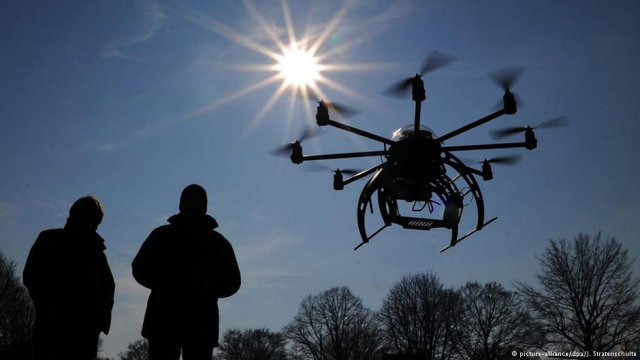 Drone sales are soaring in Germany, but so is the number of potentially dangerous near-miss incidents around airports. The authorities have now decided that it’s time to reel in the flying robots.
Drone sales are soaring in Germany, but so is the number of potentially dangerous near-miss incidents around airports. The authorities have now decided that it’s time to reel in the flying robots.
Germans have developed a taste for drones. Sales are climbing and prices are dropping. Some are now being sold that can even be controlled via smartphone. And so, predictably enough, dangerous incidents near airports are becoming more and more frequent.
“We’ve noticed that a lot of drone pilots don’t really know the air traffic rules, and enter air spaces they’re definitely not allowed to go into,” said Ute Otterbein of the German flight safety authority, DFS. “In the past year, we’ve had around a dozen incidents reported by pilots in German air space, where drones were seen in the approach area s of major airports. And there were a few incidents which could have become dangerous.”
This, Otterbein said, was significantly more than the year before, when she could remember only one such incident (the figures are imprecise, because the DFS has to rely on testimony from airline pilots who aren’t obligated to report such incidents).
And yet the increasing trend has also been noticed at a regional level. In Lower Saxony, complaints to the transport authority have increased from one a month to five in certain weeks. Spokeswoman Silvana Reimann told news agency DPA: “Reports of blatant violations are increasing, so we saw a need to act” – in this case, they have been sending out more and more tickets with fines stretching to several hundred euros.
New rules to ignore…
The Federal Transport Ministry has also seen “a need to act,” and is working on new rules to regulate both private and commercial drones. From now on, private drones – or “Unmanned Aerial Systems” as they’re officially known – are not allowed to fly above an altitude of 100 meters (330 feet), or within 1.5 kilometers (0.9 miles) of an airport or airfield.
They will also be forbidden to fly over government buildings, prisons, hospitals, power stations, crowds, accident or disaster scenes, or out of the direct sight of their pilots.
But at the same time, the rules are being relaxed for drones used by businesses – because, as the ministry puts it on its website, “they offer big opportunities for example in agriculture or traffic surveillance. In order to support this development, their opportunities for use will be extended.” To that end, the rule that drones can’t fly out of sight of the pilot will not apply to commercial drones – though their safety has to be demonstrated and pilots will be issued a license.
“We definitely welcome the fact that the transport ministry wants to create regulations,” Otterbein told DW. “Up to now, there haven’t been any firm limits on how high they’re allowed to fly – at the moment it’s all still a bit unclear.”
“We think drones systems are good,” said Sebastian Scholze of the German Aviation Association (BDL). “They have a lot of economic uses, you can do innovative things with them, but of course it has to be regulated – it can’t come at the cost of air traffic safety.”
… but no registration
At the moment, drones that weigh over five kilos need a special permit, issued by state authorities – “Anything below five kilos is considered a toy and not really likely to pose a danger,” explained Otterbein. But what is still missing is any kind of registration system.
The ministry has also suggested an ID system for drones. “That would be important, from our point of view,” said Otterbein. “So if a plane did collide with a drone, you could determine who it belonged to. But you can put any ID on a drone. I could write your name on my drone. What would be even better would be central registration – like with a car, so all drones are registered centrally. These are all ideas that are being discussed at the moment.”
But as the politicians in Berlin work out what they want to outlaw, regional authorities still have to deal with dangerous situations happening now, and hunt down errant pilots as best they can. Reimann of the Lower Saxony transport authority told DPA that they are often reduced to working out who drone owners are by picking up clues from the videos they post on YouTube.
“Sometimes we look at the pictures on Google and calculate how high the cloud cover was on that day,” she said.
Source: Deutsche Welle
